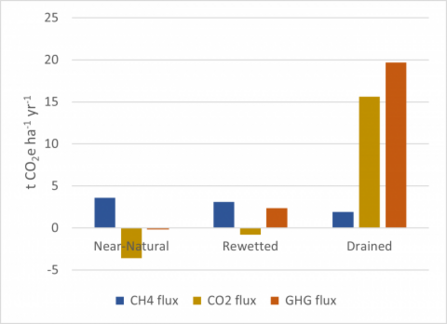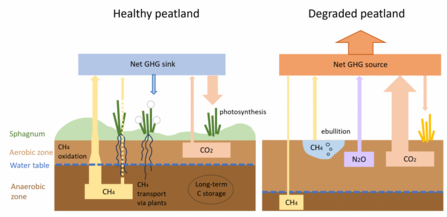The IUCN UK Peatland Programme has launched a new briefing “Peatlands and Methane” that summarises the science around methane emissions from peatlands. The publication explains the natural processes that lead to methane production and compares greenhouse gas emissions from intact, drained, and rewetted peatlands.
The risk of increased methane emissions from rewetted peatlands is sometimes seen as an argument to avoid peatland rewetting. However, it is important to consider all greenhouse gas (CO2, N2O) fluxes to determine whether a peatland is a net sink or source of carbon – methane should not be considered in isolation. Whilst methane emissions can initially increase after rewetting, the overall greenhouse gas emissions from rewetted peatlands are significantly lower than emissions from drained peatlands and far more similar to near-natural, healthy peatlands. Near-natural, healthy peatlands can also act as net greenhouse gas sinks, so not only is it important to rewet drained peatlands, but to protect existing healthy peatlands from damage as well.


